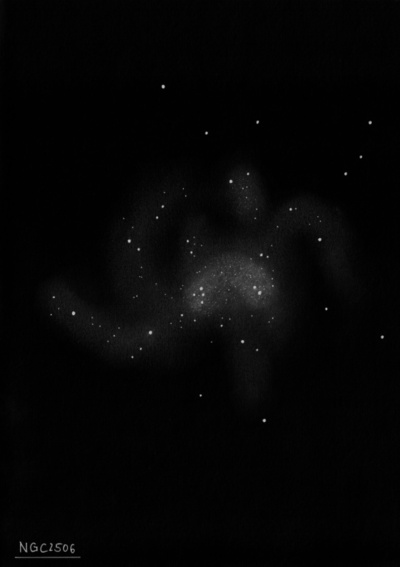
William Herschel discovered NGC 2506 = H VI-37 = h480 on 23 Feb 1791 (sweep 995) and recorded "a very compressed and very rich cluster of stars. The stars are of 2 sizes, some considerably large and the rest next to invisible. The compressed part 5' or 6' in diameter." His position (Auwers' reduction) is 7' NNE of center of this cluster. It was independently found by Karl Ludwig Harding around 1823 and reported it as a new discovery.
John Herschel's described the cluster on 9 Mar 1828 (sweep 129) as "the first *11m in the p part of a rich resolved p comp cl irreg fig; *s 11...20m, so as to be nebulous. The most comp part = 4' or 5' diam. His Slough position is accurate, but he subtracted 10' in North Polar Disatance in the GC (General Catalog) assuming he made an error, as his position didn't match his father's or Harding's. See GC and NGC notes.
Lord Rosse, or his observing assistant George Stoney, commented on 27 Jan 1849 "More approach towards spiral appearance than I have seen in any other cluster [obvious spiral shapes were a primary focus]. Very curious black spaces with power 700x."
300/350mm - 13" (2/23/85): at 220x, ~35 stars visible, many in a winding row. A number of brighter mag 11 stars surround the group.
400/500mm - 17.5" (3/12/94): 75 stars in 10' diameter at 220x. The brightest members are a wide pair of mag 11/12 stars at the west end with a separation of 27" oriented SW-NE and a mag 11.5 star at the east end. Rich in mag 13-14 stars with a roughly circular outline except for a "bite" on the south side. The richest subgroup is following the two brighter stars at the west end and is 3' diameter forming a "C" shaped asterism opening to the south over haze and is quite striking.
Notes by Steve Gottlieb